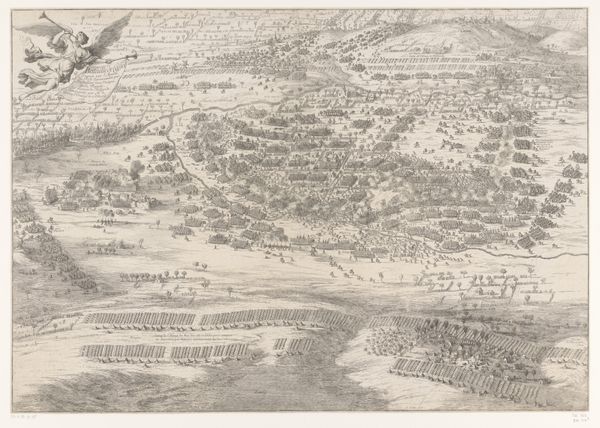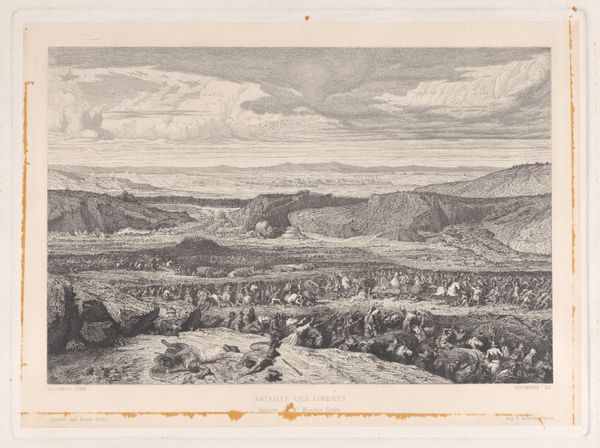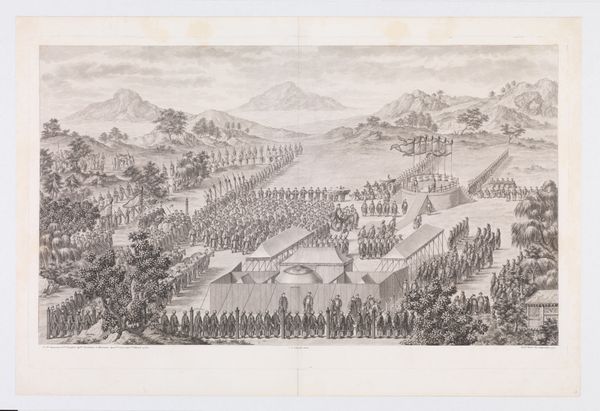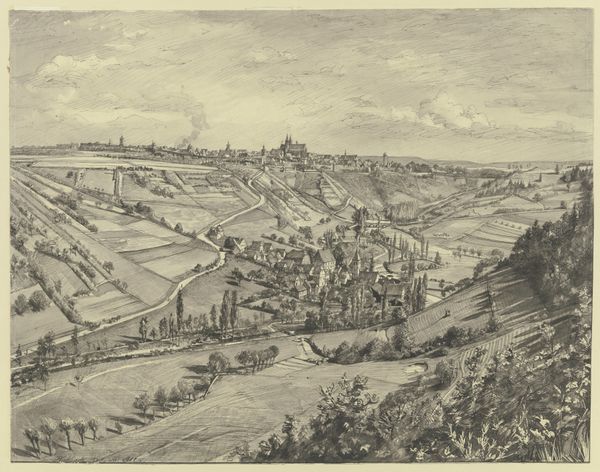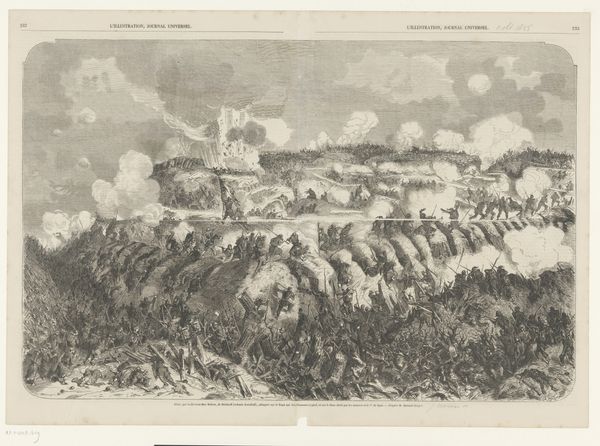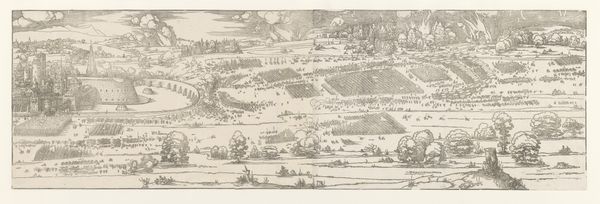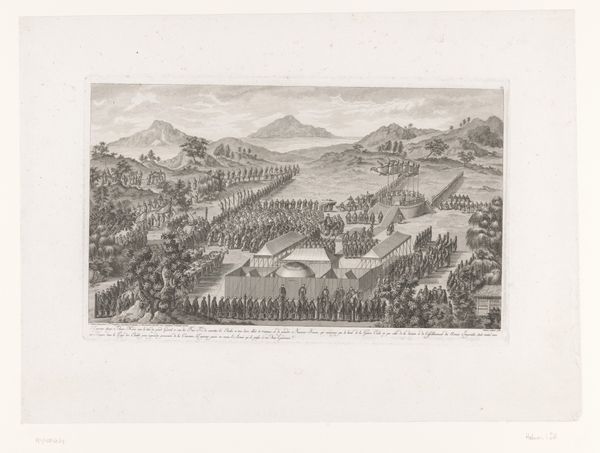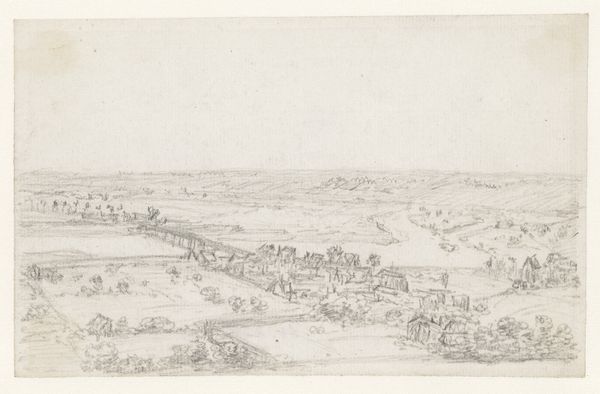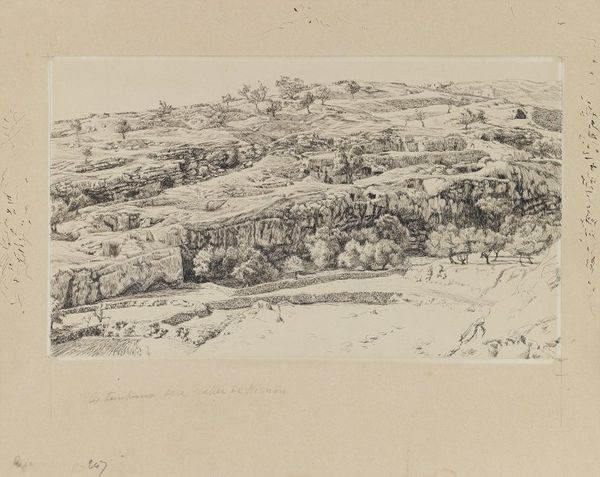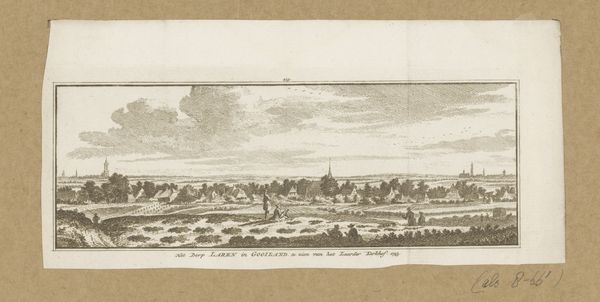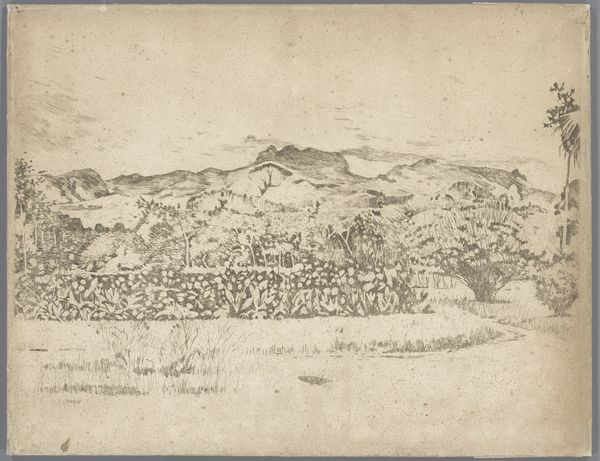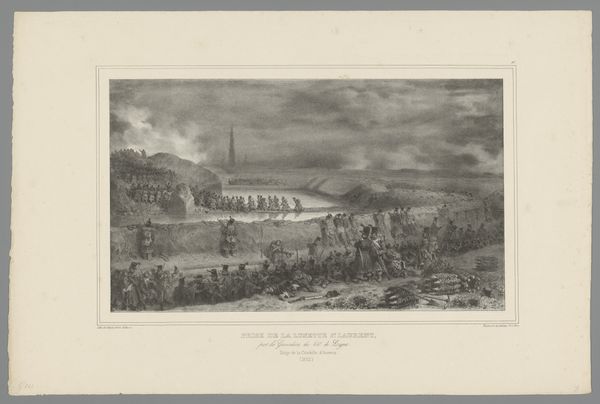
print, engraving
# print
#
landscape
#
history-painting
#
engraving
#
realism
Dimensions: height 256 mm, width 364 mm
Copyright: Rijks Museum: Open Domain
Curator: What a vast, panoramic scene. My eye is immediately drawn to the smoke blooming across the landscape; it hints at violence, but there’s a strange distance, almost a calmness to the overall composition. Editor: Indeed. What we’re viewing here is an engraving by Jules Worms, titled "Slag bij de Chernaya, 1855," depicting the Battle of the Chernaya during the Crimean War. It's a printed reproduction, likely disseminated widely through illustrated journals of the period. The sheer accessibility of images like this tells us a lot about the public's hunger for visual representations of events unfolding far away. Curator: It's intriguing to consider this image as a commodity. Printmaking made visual narratives like this available on an unprecedented scale. I'm curious about the process—the choice of engraving, a technique reliant on skilled labor and reproducible, standardized marks. What does this speak to in terms of disseminating not only information, but also a particular view on the conflict? Editor: Absolutely. And, in turn, what view were these journals and images selling? Realism, as seen here, gained popularity through just such publications—but whose reality was depicted and to what end? The even, unemotional light feels like an appeal to truth, and also distance, that might conceal more than it reveals. Curator: Agreed. Look at the materials – paper, ink, the tools used to create the plate. These are all components that contribute to shaping perceptions of war. And thinking of the original creator versus the engravers--where is the line between the creator, the artisan, the distributor, and ultimately, the consumer of this visual product? Editor: That’s a crucial point. The Crimean War was one of the first to be heavily documented by the press. Images like this would have shaped public opinion, influencing support or opposition to the war effort and shaping the role of France as an imperial power. And further, its presence on the page of a journal creates the news – enshrining events as officially recognized, while still crafted by human hands. Curator: So the image's production is not divorced from its historical narrative but completely enmeshed in it. The very act of mass production colors our understanding. The materials, labor, and method of dissemination all worked to solidify a place for this battle in the collective French consciousness. Editor: Precisely. It compels us to ask questions not only about the event, but about the medium itself and its cultural function within a specific socio-political context. An artwork so heavily circulated can truly be appreciated when understood through these varied networks.
Comments
No comments
Be the first to comment and join the conversation on the ultimate creative platform.
